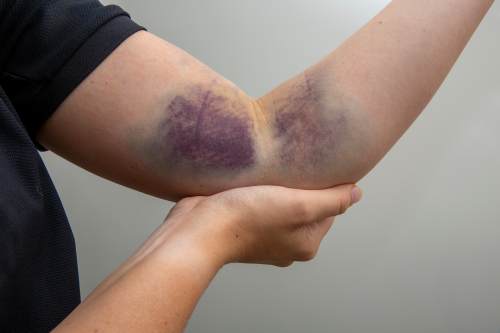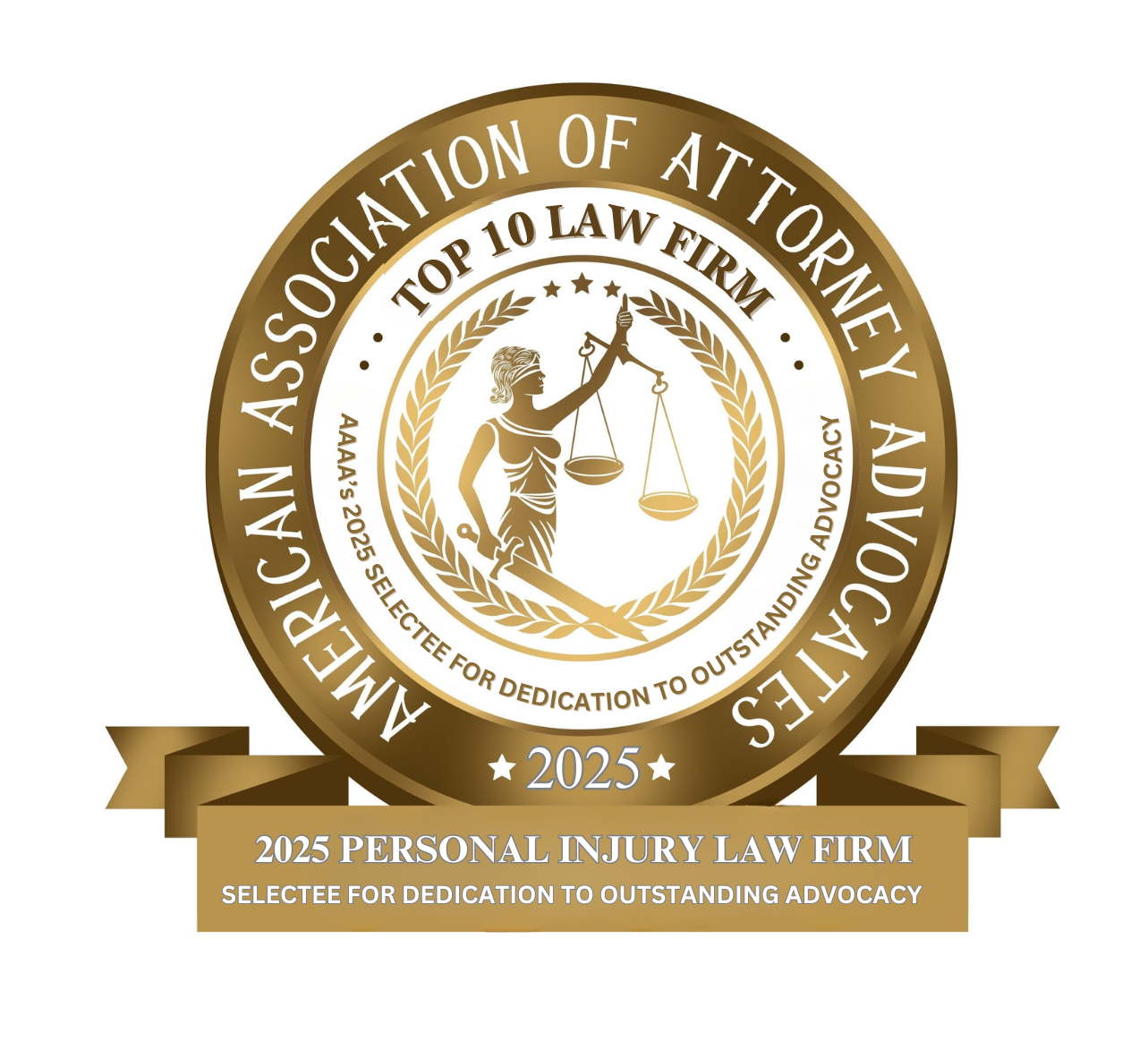- Free Consultation: (630) 527-4177 Tap Here to Call Us
What Is Blunt Force Trauma In A Car Accident?

Blunt force trauma refers to injuries caused by a non-penetrating force, a collision, a blow, or compression, that transfers energy to the body without an object piercing the skin. In the context of car accidents, blunt force trauma is the most common mechanism of injury: occupants are thrown against dashboards, airbags, steering wheels, door panels, or experience rapid acceleration–deceleration forces (whiplash) and compression that damage bones, organs, and the brain. Medical literature groups blunt injuries into contusions (bruises), abrasions, lacerations, and fractures. The seriousness of injury depends on the amount and direction of force, the part of the body struck, and the person’s age and health.
“Blunt force injuries from car crashes can leave victims with invisible but life-changing damage, including fractures, internal injuries, and brain trauma that don’t always show right away. Early medical care and careful documentation are critical to both recovery and protecting your rights.” — John J. Malm, Naperville car crash attorney
Why Blunt Force Trauma Matters In a Car Accident
Blunt force trauma can range from superficial bruises to life-threatening internal injuries. Even when the skin appears intact, internal bleeding, organ laceration, or traumatic brain injury (TBI) can be present. According to the NHTSA, motor vehicle crashes remain a leading cause of traumatic injuries in the United States. In 2023, an estimated 2.44 million people were injured in traffic crashes, many of those injuries are blunt in nature due to the forces involved. Because signs of internal injury may be delayed, understanding blunt trauma, recognizing warning signs, and obtaining prompt medical evaluation are essential to preventing long-term disability or death.
Common Types of Blunt Force Injuries From Car Accidents
- Head injuries/Traumatic brain injury (TBI): Concussion, contusion, diffuse axonal injury can occur from impact with interior vehicle surfaces or rapid deceleration. Motor-vehicle crashes are a major contributor to TBI hospitalizations and deaths.
- Facial and dental injuries: Broken teeth, facial fractures, orbital (eye socket) fractures, nasal fractures.
- Chest injuries: Rib fractures, pulmonary (lung) contusions, blunt cardiac injury, and mediastinal damage. Rib fractures often signal more severe chest trauma and frequently occur in high-energy collisions.
- Abdominal and pelvic injuries: Liver and spleen lacerations, kidney bruising, and pelvic fractures from compression or direct impact.
- Spinal and neck injuries: Vertebral fractures, spinal cord contusion, and soft-tissue injuries such as whiplash.
- Extremity fractures and soft-tissue damage: Broken arms/legs, dislocations, compartment syndrome from crush injuries.
How Blunt Force Trauma Happens Inside a Vehicle
In a crash, the human body obeys physics: if a car suddenly stops, the occupant’s body continues moving at the pre-crash speed until stopped by a restraint, interior structure, or another object. Key mechanisms include:
- Direct impact: Striking the steering wheel, dashboard, windshield, or side door.
- Deceleration/acceleration (inertial forces): The brain or organs move within the skull or body cavity and shear against tissues (often causing TBIs or organ tears).
- Compression/crush: The body or a limb is squeezed between two surfaces (e.g., vehicle and object).
- Stretching or torsion: Twisting forces cause ligament tears or spinal injuries.
Typical Signs and Symptoms of Blunt Force Trauma
Blunt force trauma may present immediately or over hours to days. Common warning signs after a crash include:
- Loss of consciousness, confusion, nausea or dizziness (possible brain injury).
- Severe or increasing headache, blurred vision, slurred speech, or memory problems.
- Chest pain, difficulty breathing, or pain when taking a breath (possible rib fracture, lung contusion).
- Abdominal pain, tenderness, vomiting, or lightheadedness (internal bleeding).
- Numbness, weakness, or loss of function in a limb (possible fracture or nerve/spinal injury).
- Visible deformity, swelling, large bruises, or bleeding.
If any of the above are present after a crash, urgent medical evaluation, including focused physical exam and diagnostic imaging such as X-ray or CT scan, is necessary.
How Often Do Blunt Force Trauma Injuries Occur?

- Motor vehicle crash injuries (U.S., 2023): Approximately 2.44 million people were injured in traffic crashes in 2023. These injuries include a large share of blunt force injuries because most vehicle collisions involve non-penetrating forces.
- Traffic fatalities: NHTSA estimated 40,901 traffic deaths in 2023, a decrease from prior years, but crashes continue to be a major cause of mortality and severe trauma.
- TBI and motor vehicle crashes: Motor vehicle crashes account for a significant portion of TBI-related hospitalizations and deaths; historically, crashes account for roughly 20–25% of TBI hospitalizations in some surveillance reports. (TBI remains a major cause of death and disability.)
- Chest trauma prevalence: Multiple studies report that rib fractures and lung contusions are among the most common chest injuries in blunt chest trauma, and road traffic collisions are a leading mechanism in many series. In some recent trauma center studies blunt trauma accounts for over 90% of chest trauma cases.
Diagnosis and Treatment of Blunt Force Trauma Injuries
Diagnosis begins with a careful history (how the crash happened) and a primary survey (airway, breathing, circulation) in the emergency setting. Imaging is central:
- X-rays for suspected fractures.
- CT scans for head injury, neck, chest, abdomen, and pelvis. The CT is the workhorse for identifying internal injury after blunt trauma.
- Ultrasound (FAST exam) to look for internal bleeding in the abdomen.
- MRI for select soft-tissue or spinal cord injuries.
Treatment depends on the injury type and severity:
- Stabilization: Airway management, oxygen, IV access, control of external bleeding.
- Surgical intervention: Repair of organ lacerations, fixation of complex fractures, thoracic surgery for severe chest injury.
- Nonoperative care: Pain control, respiratory therapy for rib fractures (to prevent pneumonia), observation for evolving injuries.
- Rehabilitation: Physical therapy, cognitive rehab for TBIs, occupational therapy for functional recovery.
Prompt diagnosis and correct triage improve outcomes. Missed internal injuries can lead to catastrophic delayed complications.
Long-Term Consequences of Blunt Force Trauma Injuries
Blunt force trauma can produce long-term disability. Traumatic brain injuries may cause persistent cognitive, emotional, or motor deficits. Rib fractures and chest trauma can lead to chronic pain or reduced pulmonary function, while abdominal injuries can require long-term monitoring for organ dysfunction. Psychological sequelae such as PTSD, anxiety, or depression are common after severe crashes. Early, coordinated medical care and rehabilitation improve recovery chances, but many victims face prolonged recovery periods and expensive medical bills.
Frequently Asked Questions About Car Accident Blunt Force Trauma
Q: If I have only bruises after a crash, should I still see a doctor?
A: Yes. Bruising can mask deeper injuries. Medical evaluation with a focused exam and imaging when indicated will rule out fractures, internal bleeding, or organ injury.
Q: Can blunt force trauma cause a delayed brain injury?
A: Yes. Some TBIs (like subdural hematomas) may evolve over hours to days. If you experience worsening headache, confusion, vomiting, or changes in consciousness after a crash, seek emergency care immediately.
Q: Are fractured ribs dangerous?
A: Rib fractures can be dangerous because they may puncture lungs, cause contusions, or signal other serious chest or abdominal injuries. Older adults and those with multiple rib fractures are at higher risk of complications.
Q: What documentation should I get after a crash?
A: Obtain a copy of the police crash report, your medical records (ER notes, imaging reports), photographs of injuries and vehicle damage, witness contact info, and keep records of expenses and time lost from work. These documents are essential if you pursue an insurance claim or legal action.
When to Contact an Illinois Car Accident Attorney
Blunt force trauma often leads to complicated medical treatment, long recovery, and significant financial and emotional costs. If your injuries resulted from another driver’s negligence, such as speeding, impaired driving, or distracted driving, an experienced personal injury attorney can help:
- preserve evidence (vehicle damage, scene photos, medical records);
- coordinate with medical experts to document the full extent of injury;
- negotiate with insurance companies that may undervalue or deny claims;
- pursue a claim or lawsuit to seek medical costs, lost wages, pain and suffering, and other recoverable damages.
If the responsible party is disputing fault or minimizing your injuries, legal guidance is especially important.
Contact the Trusted Illinois Car Accident Lawyers at John J. Malm & Associates
Blunt force trauma in a car accident ranges from minor bruises to life-threatening internal injuries and traumatic brain injury. Motor vehicle crashes still cause millions of injuries every year, and early medical assessment, accurate diagnosis, and coordinated care are essential to minimize long-term harm. If you or a loved one sustained blunt force injuries in a crash, document everything, follow up with recommended care, and consider speaking with an experienced Illinois car accident attorney to protect your legal rights and recover the compensation you need for medical bills, lost income, and rehabilitation.
If you’re in Illinois and need help after a crash, contact John J. Malm & Associates for a free consultation. We’ll review your case, help gather medical and crash evidence, and fight to hold negligent parties accountable so you can focus on healing. Call us today, don’t wait to get the help you deserve.















